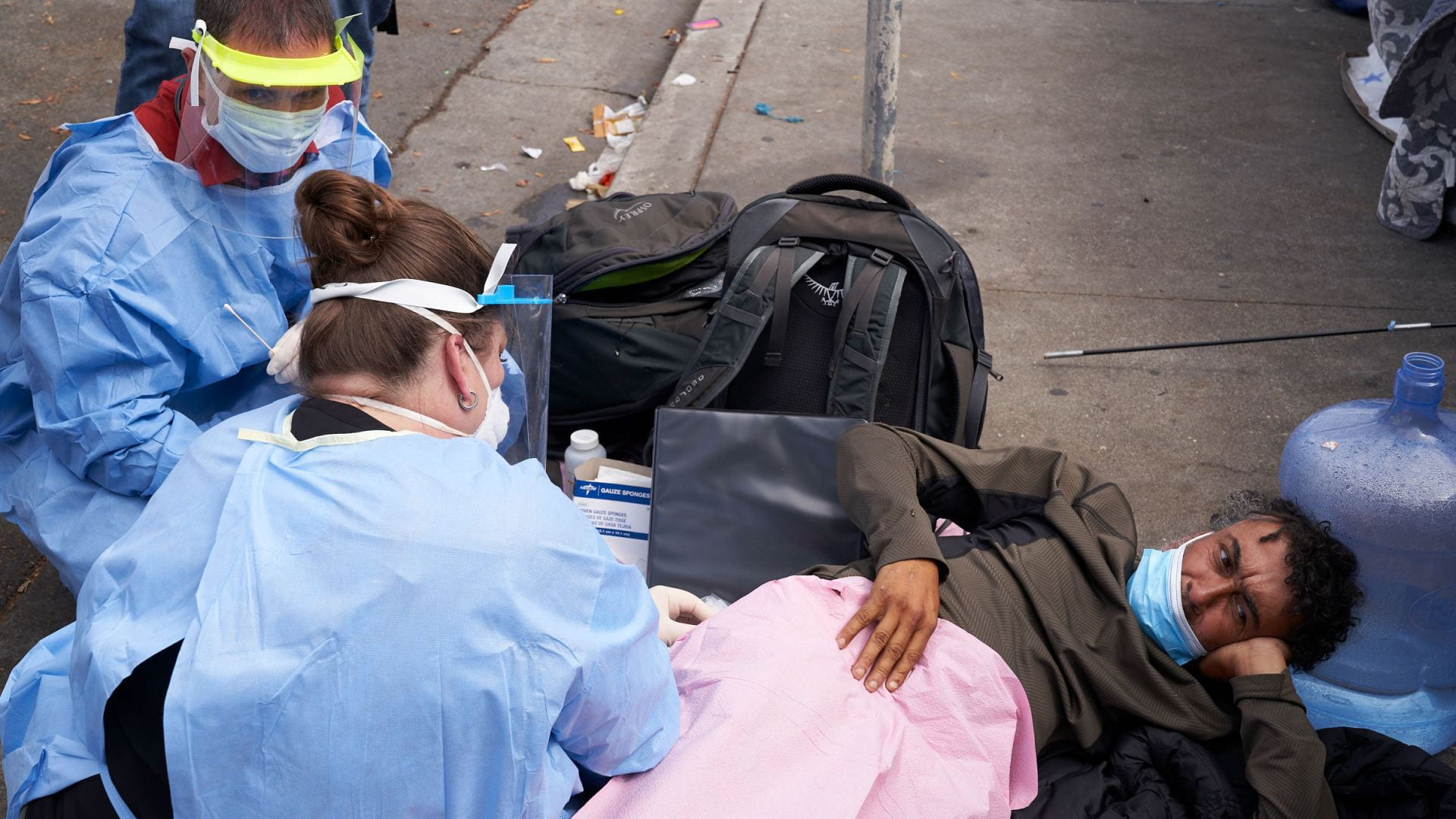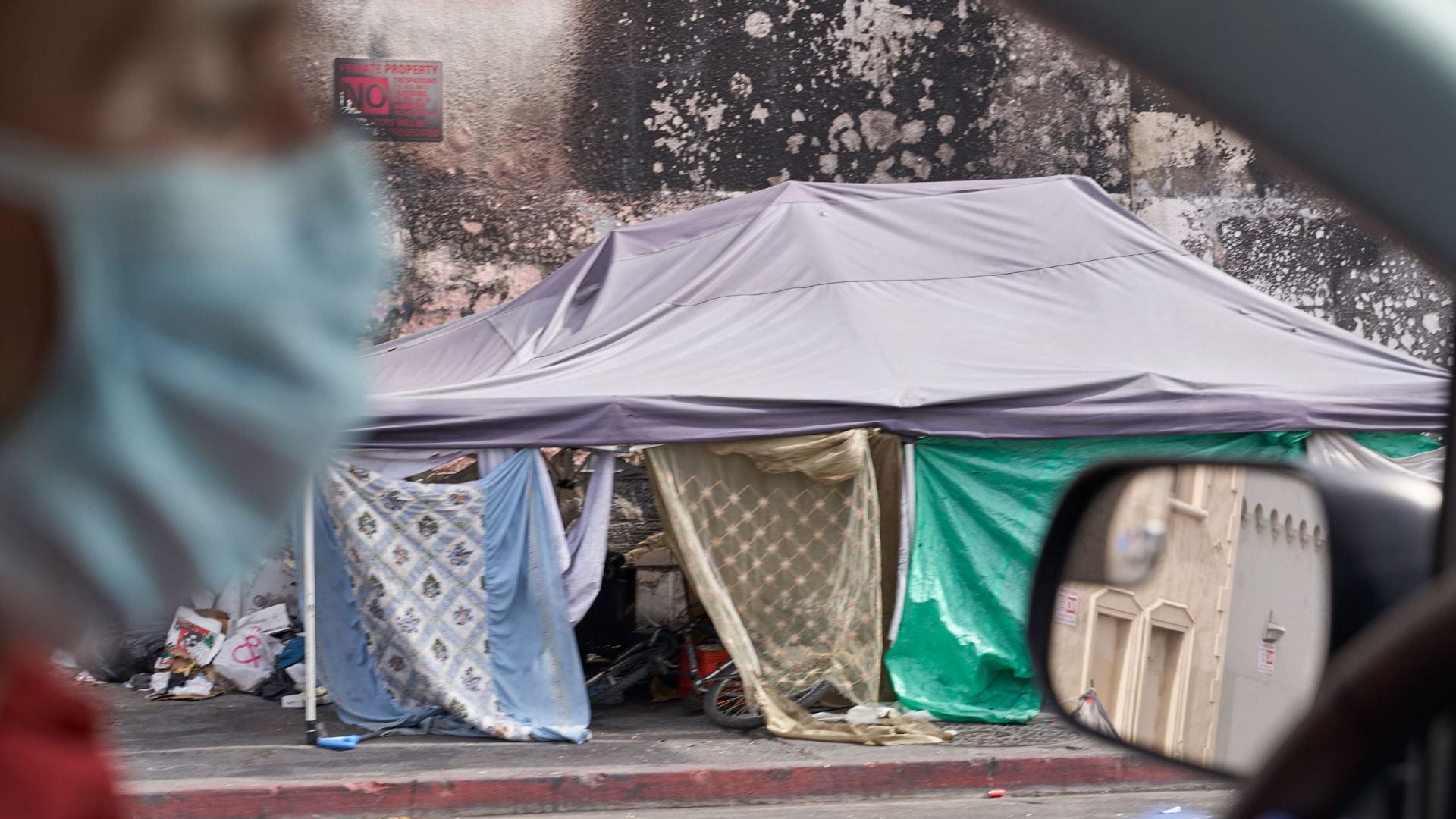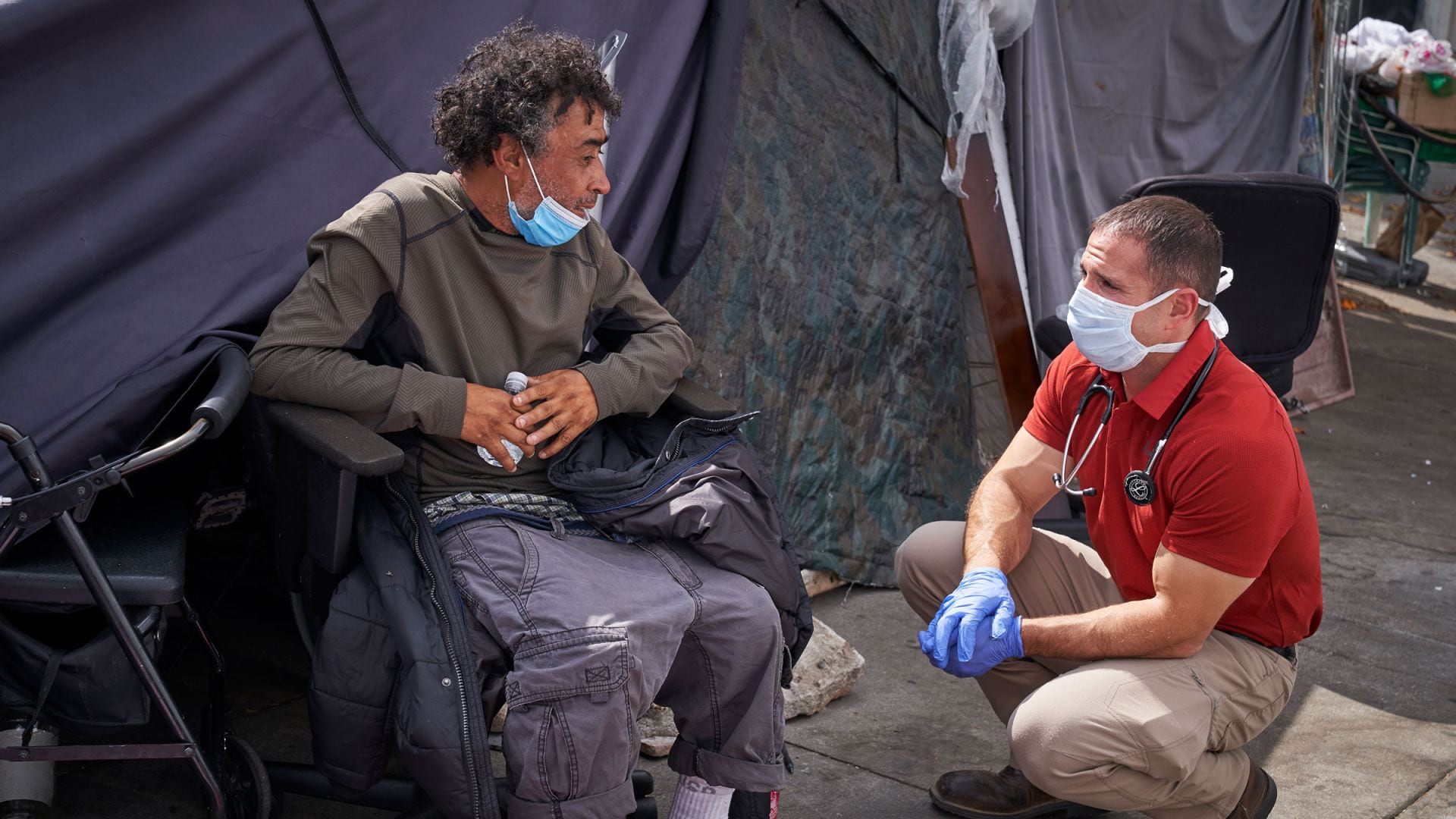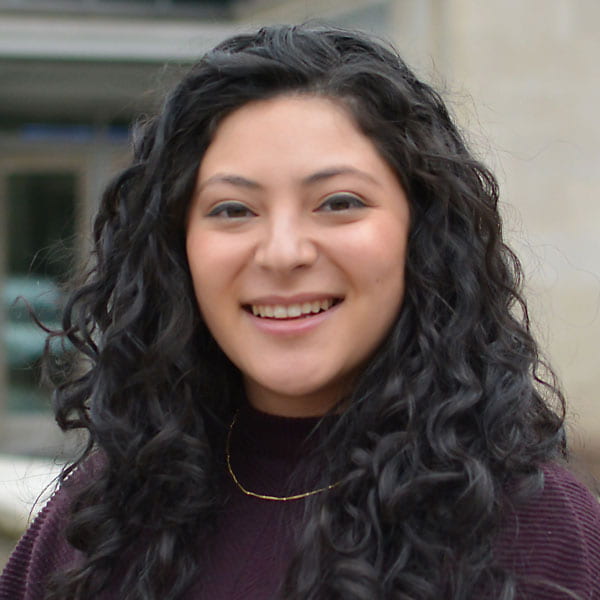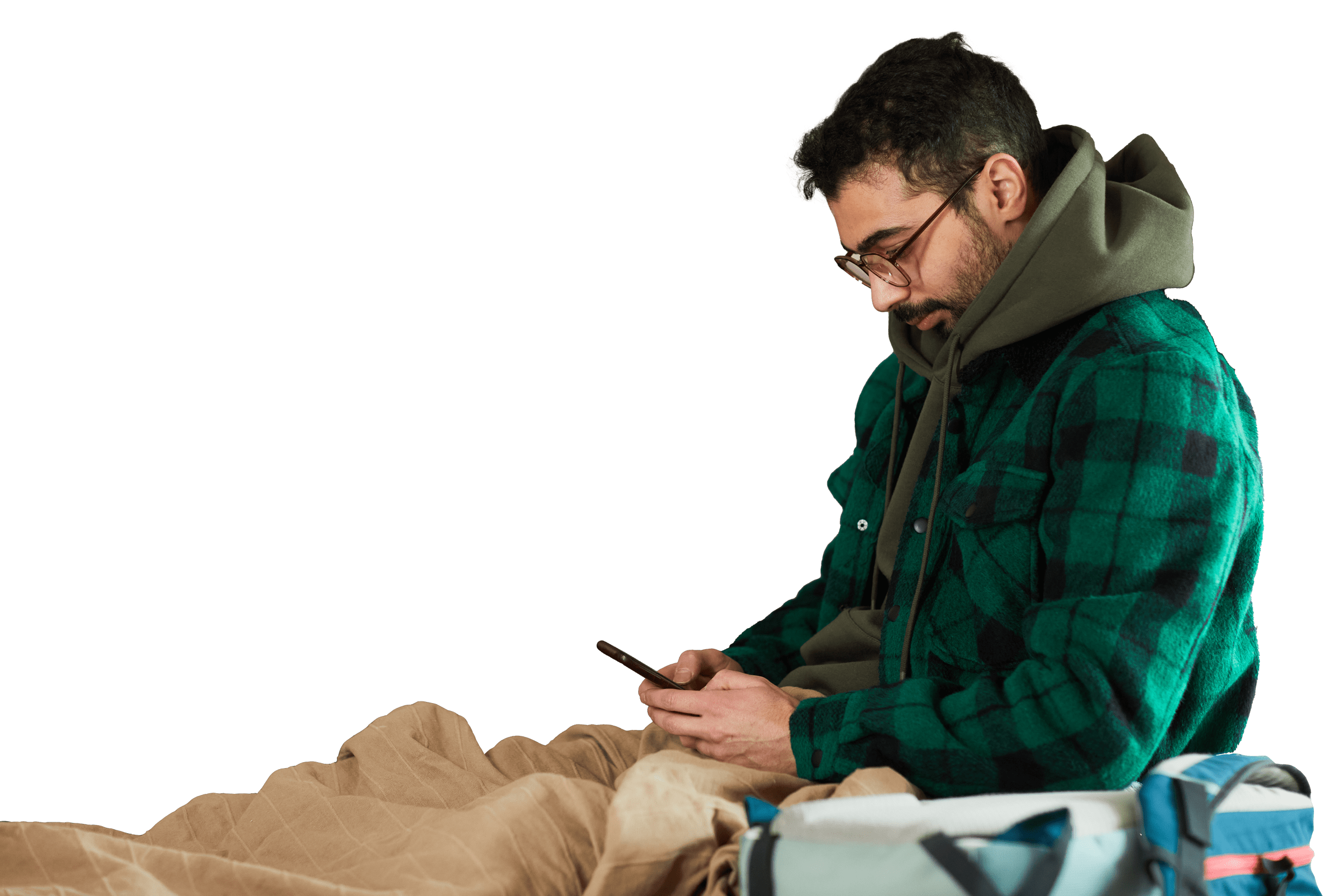
Penn State students and alumni are working to combat systemic homelessness in the United States
Imagine losing your home, personal belongings, and access to food, water, and adequate healthcare. Loss of basic needs is just the start of many hardships that unhoused individuals face. This burden quickly takes a physical and mental toll, which can contribute to a host of problems, including chronic health issues and substance abuse. Penn State students are working to help address the issues associated with being unhoused in the United States.
Unhoused individuals are especially prevalent in urban, densely populated areas of the country, including Los Angeles, California. Around 50% of the total California unhoused population lives in the greater Los Angeles area, about 60,000 people. Most of them face challenges accessing basic human necessities like food, water, shelter, and adequate healthcare.
Lori Gravish Hurtack, associate teaching professor of kinesiology at Penn State, explains to her students that an individual can slip into living an unsheltered lifestyle in very few steps. “The sequence can often present as follows: you lose your job, miss a mortgage payment and are forced to live in your car, which next gets impounded. Without a good support system, you end up trying to survive on the streets.”
In 2020, Gravish Hurtack had an idea sparked by a visit from Brett Feldman, MSPAS, PA-C, who graduated from Penn State in 2003 with a degree in kinesiology. Feldman is the director of Street Medicine at the University of Southern California (USC) Keck School of Medicine, a program he co-founded with his wife, Corinne, MMS, PA-C, who graduated from Penn State in 2002 with a degree in kinesiology.
Gravish Hurtack wanted to develop a new educational opportunity for students to interact with alumni of Penn State’s Kinesiology program. This led to the development of a new course, KINES 414: Interdisciplinary Study of Street Medicine, designed to educate students about the growing systemic problems faced by unhoused individuals.
Forms of Homelessness
Homelessness: sheltered vs. unsheltered. Sheltered individuals are living in homeless shelters, soup kitchens, temporary transitional housing, etc. They have a roof over their heads, but they do not have a home. Unsheltered individuals are those living on the streets in tents, boxes, encampments, etc.
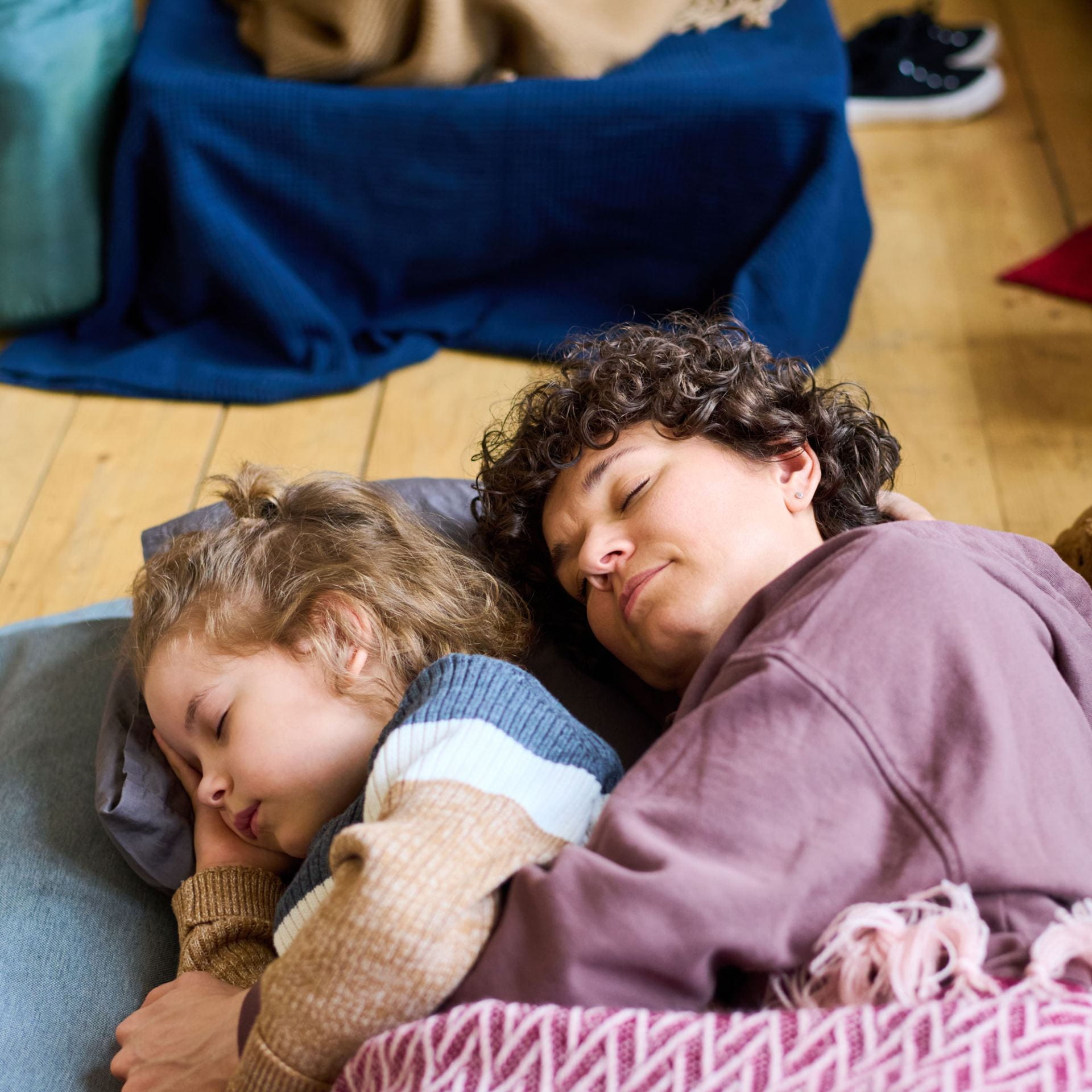
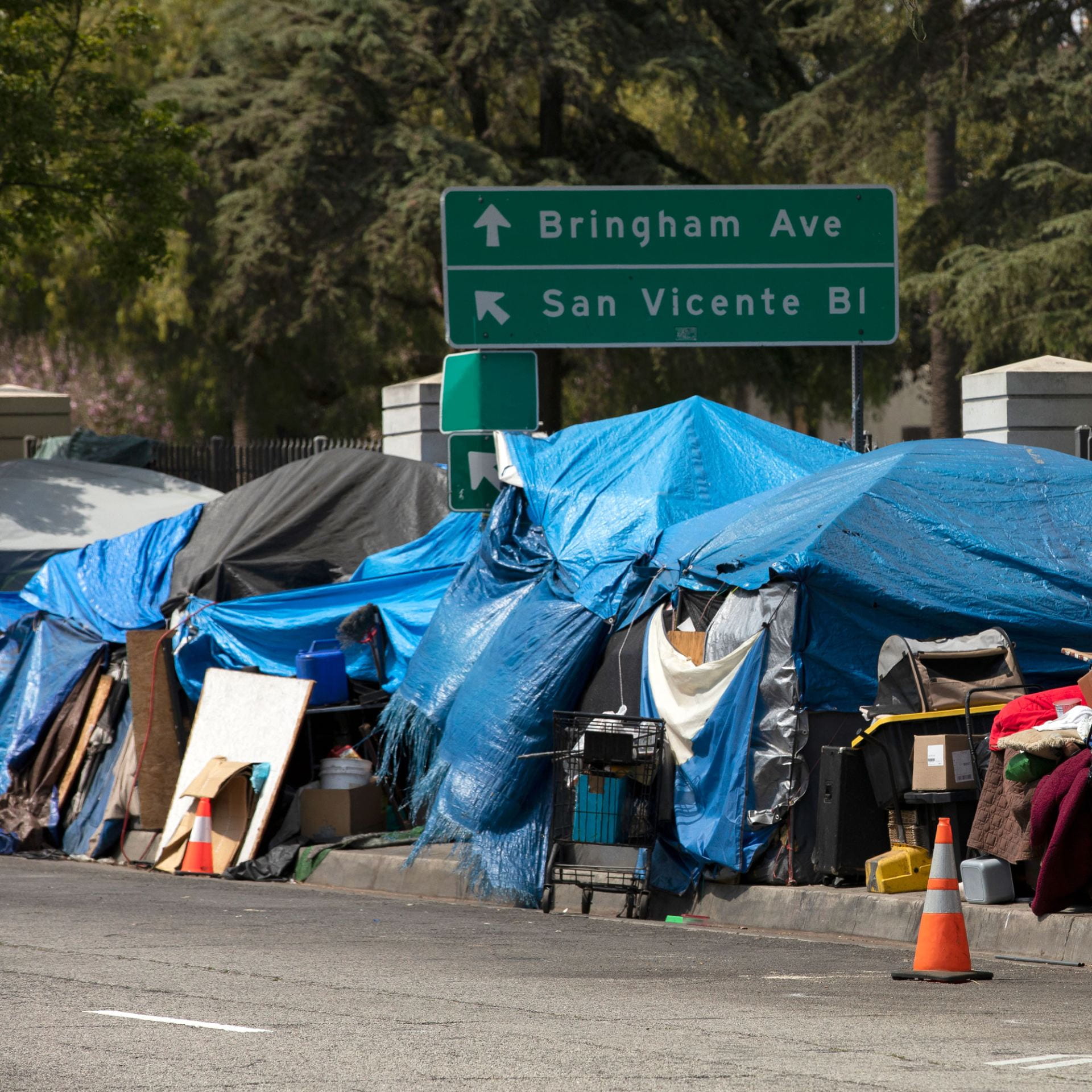
The course, which launched last spring, included an embedded experience where students traveled to Los Angeles to visit service sites for unhoused individuals. There, they learned about the Street Medicine program alongside Brett Feldman and his team, who together provide direct care for unhoused individuals in the Greater Los Angeles area, free of charge and in a location selected by the unhoused individual.
While making their way through different regions of Los Angeles, students were able to observe medical evaluations, workup and testing procedures, injections, medication distribution, and more, in a variety of settings.
Gravish Hurtack feels that experiential learning opportunities like this trip to Los Angeles are just as important as the knowledge learned in the classroom. “It gives students the opportunity to see issues like the social and racial disparities of homelessness in Los Angeles firsthand and reinforces what students learned throughout the semester in real-world settings,” she said.
“
Awareness is a synergy that leads to advocacy, and that process can improve the health of our nation one patient at a time. If we can educate students on the physical, psychological, and social struggles and limitations faced by unsheltered individuals on a daily basis, we can do a better job of bridging the gap to decrease systemic homelessness in America.
– Lori Gravish Hurtack
Associate Teaching Professor
”
Brett Feldman was excited for the opportunity to reconnect with his Penn State roots. He said, “Penn State is my home, and I feel tremendous gratitude for the education I received and even more for the lessons I learned there. Even though we are on the other side of the country, the lessons of love and solidarity are universal, and I know the students will bring it back to their hometowns.”
Nick Fanizzi, who majored in kinesiology, said the USC Street Medicine team’s passion, empathy, and dedication to serving an underserved population were truly the highlight of the trip.
“People experiencing homelessness are human too, and a lot of times they aren’t treated as such. Everyone deserves to receive the care they need, and it was fulfilling to give some humanity back to these individuals,” Fanizzi said.
There are many misconceptions about unhoused individuals that may lead to them being seen as less than human. For example, many people believe that individuals become unhoused due to substance abuse. Many unhoused individuals do not develop a substance abuse problem until after becoming homeless. The stress of being unhoused leads many individuals to turn to substance abuse as a way to cope. While many would assume overdose is the number-one cause of hospitalizations in this population, the USC Street Medicine team has found that congestive heart failure is actually the number one contributor in their experience.
Recognizing these biases and stigmas is one part—and a first step—of educating students about the epidemic of unhoused individuals nationwide.
Joanna Delaney, another student who majored in kinesiology and participated in the experience, said, “There is a preconception that those who are on the streets are not doing enough to try and get themselves back on their feet. In reality, those who are experiencing homelessness need a place to shower and put themselves out there with their best foot forward to be able to attend a job interview. Sadly, these individuals are denied access to any facility that might have a shower because they live on the street. This is one of many barriers unsheltered individuals are faced with when working to better themselves and their situation.”
Brett and Corinne Feldman conducting street rounds at an unhoused encampment on the streets of Los Angeles, California.
Many unhoused individuals are not willing to leave a certain geographic area to receive medical care for fear of someone stealing their belongings while they’re away, losing their space, or a variety of other reasons. Meeting individuals in a setting of their choice makes adequate healthcare more accessible and helps individuals feel more comfortable and willing to receive the care they need. Students saw the Street Medicine team pull their pick-up truck, loaded with backpacks and medical supplies, right up to an encampment on the street.
During the height of the pandemic, The L.A. Grand Hotel, once a staple in downtown Los Angeles, was converted into temporary housing for unsheltered individuals. The L.A. Grand Hotel is kept secure, with residents unable to casually bring visitors in and out. Students were able to visit the hotel to see how the city utilized the facility to house over 400 previously unsheltered individuals.
Students also visited other parts of Los Angeles to see different ways that other organizations are working to combat systemic homelessness. Some organizations have adopted the “Housing First” model, based on the idea that individuals need a roof over their head and basic necessities like food and water before they can address other issues, like job hunting, budgeting, or substance abuse.
One of these organizations is Union Station Homeless Services, a nonprofit organization committed to helping homeless individuals and families rebuild their lives. Students in the course visited the Union Station Homeless Services’ Adult Center.
Fanizzi noted the care and attention that was paid to each individual throughout the facility. “They kept families together, and even let them keep their pets. If they were smaller, pets could stay with families in the supportive housing. If pets were bigger, they would be sheltered at the Humane Society but could be seen at any time.”
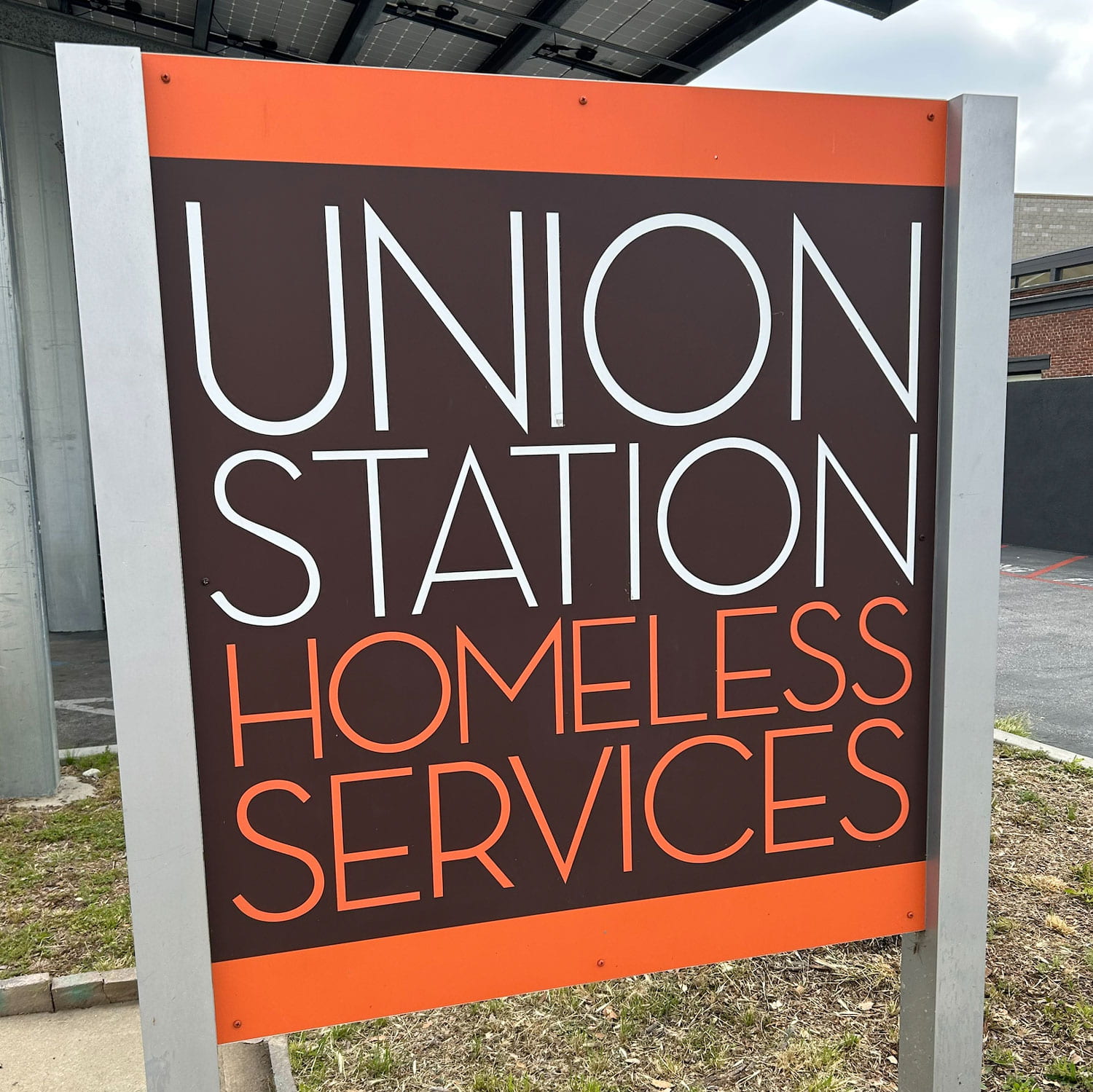
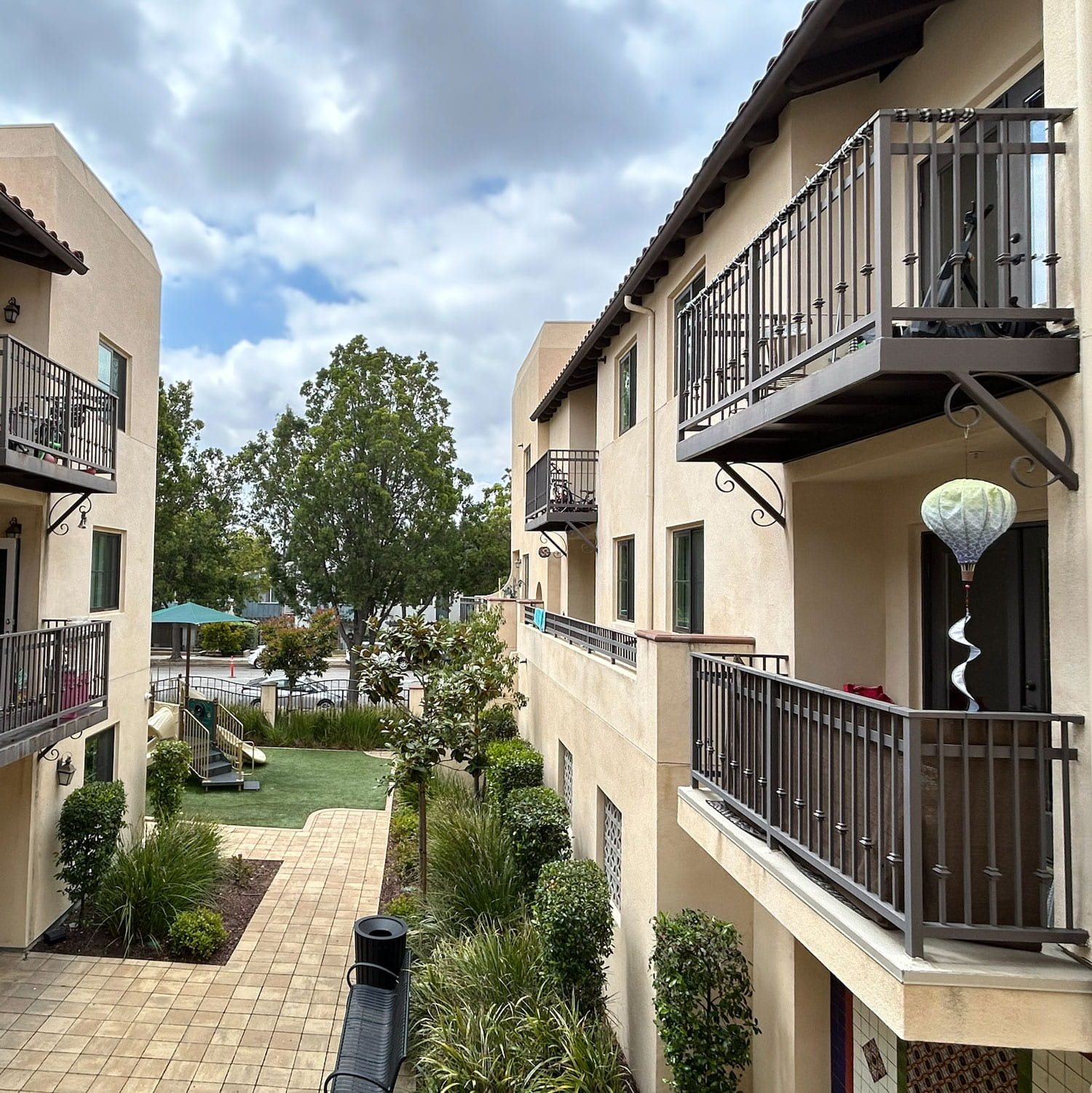
In addition to the Union Station Homeless Services Adult Center, students also had the opportunity to visit Marv’s Place, a collaboration between Union Station Homeless Services and National CORE, a nonprofit housing developer. Located in Pasadena, California, Marv’s Place provides permanent supportive housing to formerly chronically homeless families.
Growing up in New Jersey, Fanizzi is accustomed to the stigma surrounding “the projects,” with tall buildings housing low-income individuals. He said Marv’s Place was “a beautiful building dedicated to beautiful people” and is breaking the stigma of low-income populations.
One of the residents of Marv’s Place, Matt, gave students a tour of the facility and a taste of what his life is like living there with his wife and children. Students were captivated by his positivity and the way he spoke with such a love for life in spite of all the hardships he and his family have faced. Matt is always working to be the best version of himself for his family, whether that is setting up an easter egg hunt for his kids or paying off his student loans. He is currently thinking about ways to go back to school.
Matt told the Penn State students they were an inspiration to him. But Fanizzi believes Matt to be the inspiration. He notes this day as a highlight of the trip and believes Matt’s ability to be so kind, compassionate, and caring even under harsh circumstances is something everyone can learn from. “He made me realize that the people who have the most give nothing and people who have nothing give the most.”
Brett and Corinne Feldman look forward to continuing to work with Penn State students as they shadow the USC Street Medicine program.
Corinne Feldman said, “We hope students walk away from the experience with an expanded imagination and recognition that we don’t have to do things the way they’ve always been done. We must suspend our reality to meet people in theirs, not just for people experiencing homelessness, but for all people. Understanding their lived experience is essential to solving almost any challenge.”
“Awareness is a synergy that leads to advocacy, and that process can improve the health of our nation, one patient at a time. If we can educate students on the physical, psychological, and social struggles and limitations faced by unsheltered individuals on a daily basis, we can do a better job of bridging the gap to decrease systemic homelessness in America.”
Fanizzi graduated in December 2023 and plans to continue his education to become a physical therapist. Many unhoused individuals suffer from movement disorders, and his experience in the course has inspired him to think about ways physical therapy could be incorporated into serving these populations the way primary care has been delivered through the Street Medicine program.
“It was impactful to see the passion from the Street Medicine providers, who have dedicated their lives to helping those who are less fortunate. This experience has inspired me to dig deeper and learn more about the patients I may be treating in the future because everyone has a background and unique life experiences that could factor into their care path.”
You can help support the Street Medicine educational initiative at HHD by making a donation.
Photo Credits
Forms of Homelessness Sidebar: photos by MattGush and shironosov via Getty Images
Slide show: photos courtesy of Brett and Corinne Feldman via Penn State
Second Sidebar: photos courtesy of Nick Fanizzi
